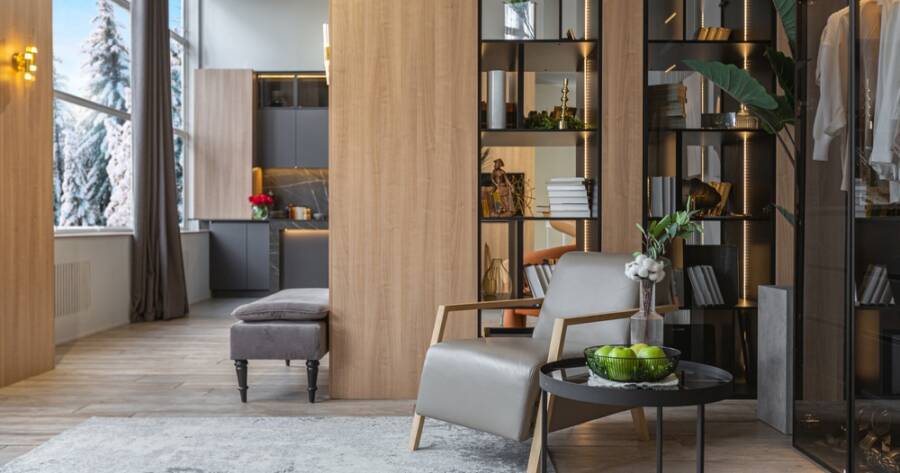Lighting is one of the most underrated tools in interior design. It doesn’t just help you see, it shapes how you feel in a space. A room with the right lighting can feel open, airy, and welcoming, while the wrong setup can make it feel small, dim, and cramped even if it’s actually spacious. The good news? You don’t need to knock down walls to open up a room. With a few strategic lighting choices, you can instantly transform your space.
Start With Natural Light (and Maximize It)
Before you dive into lamps and light fixtures, take a look at your natural lighting. Do you have windows? Skylights? Glass doors? Natural light is the easiest and most effective way to make a space feel larger.
How to maximize it:
- Keep window treatments minimal. Use sheer curtains, blinds, or leave windows bare if privacy allows.
- Clean your windows regularly to let in the most sunlight.
- Use mirrors to reflect light across the room. A large mirror opposite a window doubles the amount of light and creates the illusion of depth.
Even small spaces with limited windows can benefit from a thoughtful arrangement that draws attention to the light that is there.
Layer Your Lighting
One overhead light isn’t enough especially in rooms that lack natural light. Layered lighting adds depth and dimension, which can trick the eye into seeing more space.
The three main layers:
- Ambient lighting: This is your general light source, usually ceiling fixtures or recessed lights.
- Task lighting: Focused lighting for specific areas, like a desk lamp, reading light, or under-cabinet lights in the kitchen.
- Accent lighting: Decorative lights that highlight design features or add mood—think wall sconces, LED strips, or small table lamps.
By layering light, you eliminate dark corners and create a sense of spaciousness and balance.
Use Light, Reflective Colors
Your color palette plays a huge role in how lighting behaves in a room. Lighter shades reflect light, while darker shades absorb it—making spaces feel smaller.
Brighten up with:
- White or pale neutrals for walls, ceilings, and large furniture pieces.
- Glossy or satin finishes that bounce light.
- Metallics or mirrors in décor and fixtures.
This doesn’t mean everything has to be white, but staying on the lighter end of the spectrum helps your lighting work harder.
Choose the Right Bulbs
Not all lightbulbs are created equal. The color temperature of your bulbs can dramatically change the feel of a room.
- Warm light (2700K–3000K): Cozy and inviting, great for bedrooms and living rooms.
- Neutral light (3500K–4100K): Balanced and versatile, good for kitchens and bathrooms.
- Cool light (5000K+): Crisp and energizing, ideal for task areas or spaces with no natural light.
If you’re trying to make a space feel bigger and brighter, go for neutral to cool tones that mimic daylight.
Go Big With Fixtures (Even in Small Rooms)
It might seem counterintuitive, but larger light fixtures can make a space feel bigger. A bold pendant or chandelier draws the eye upward and makes the ceiling feel higher.
Just be sure to scale your fixture properly. If it’s too big, and it overwhelms; too small, and it gets lost.
Light Up Unexpected Spaces
Adding lighting in unconventional areas can create depth and interest.
- Try under-shelf lighting in kitchens or bookcases.
- Add LED strips behind your TV or headboard.
- Use uplighting in corners to eliminate shadows and create height.
These small touches add dimension and help brighten overlooked areas.
Light Your Way to Bigger, Brighter Spaces
You don’t need a full renovation to breathe new life into your home. By simply adjusting your lighting and using a few strategic design tricks, you can make any room feel more open, airy, and inviting.

